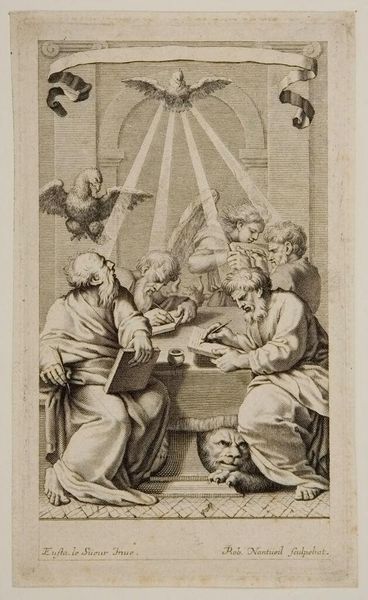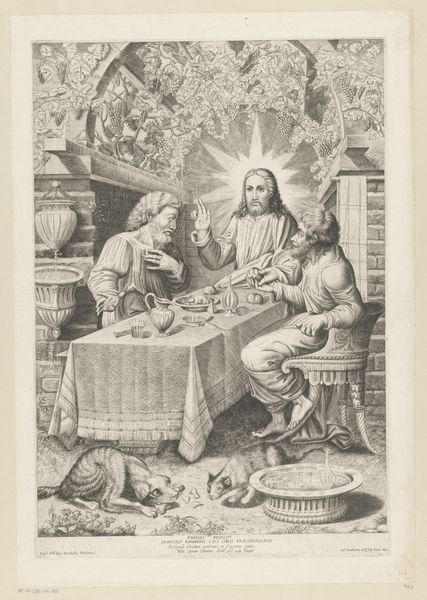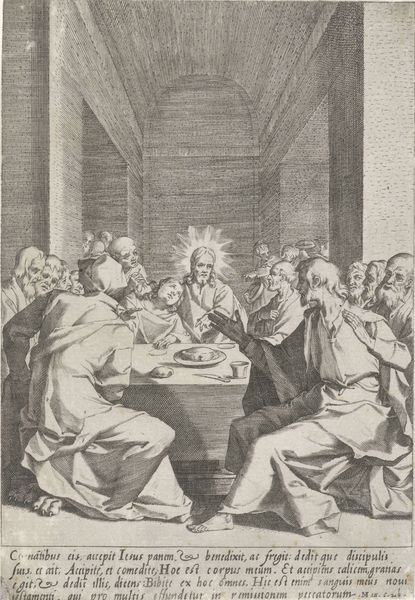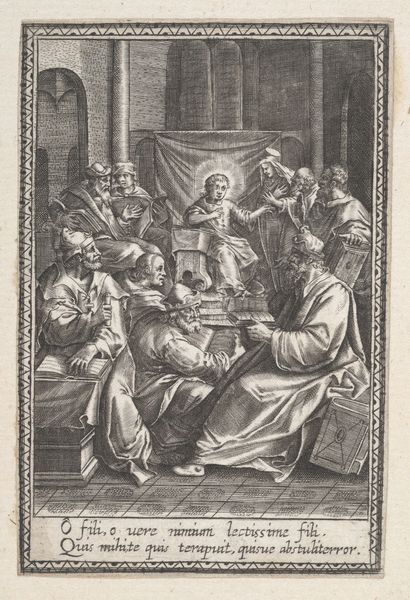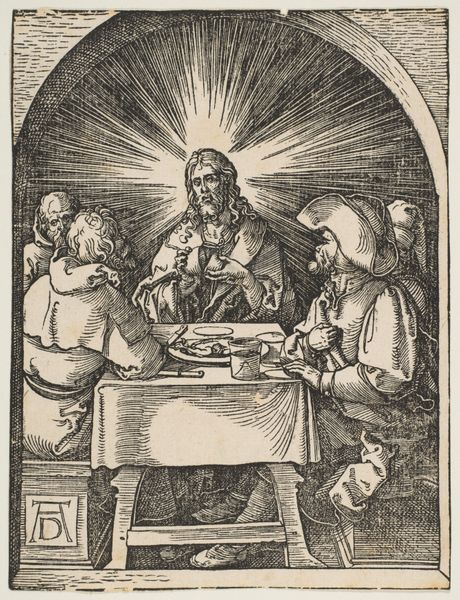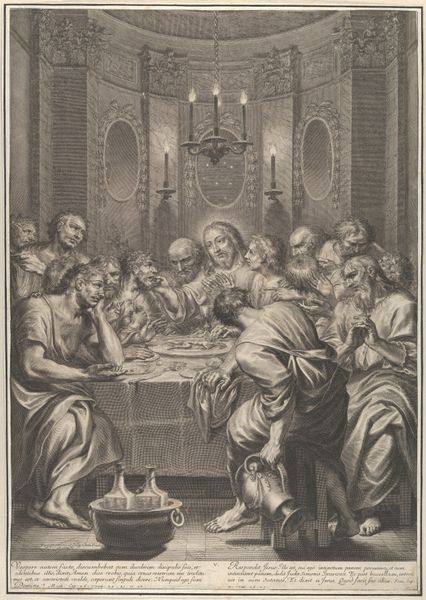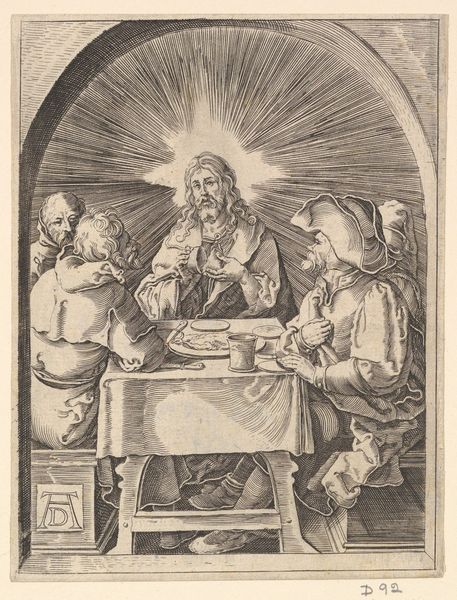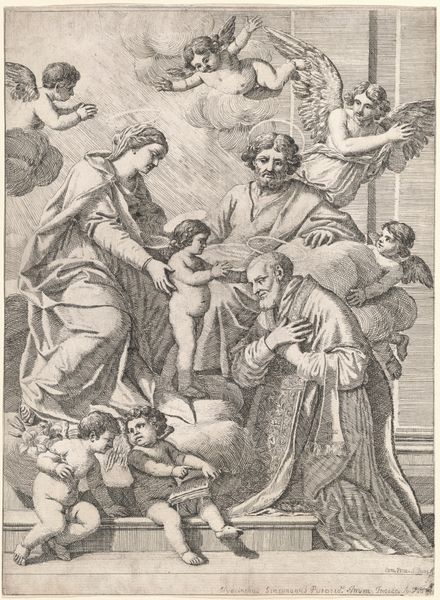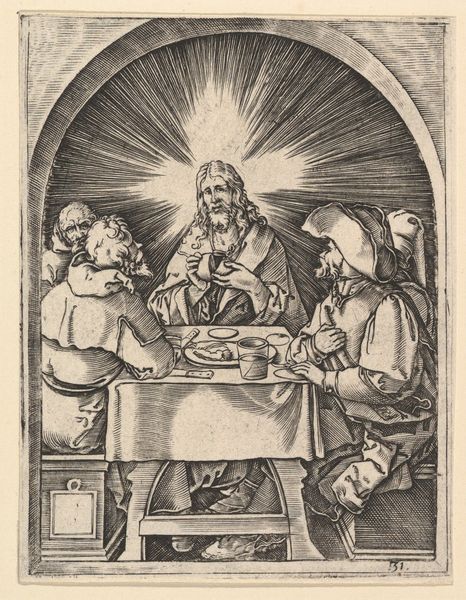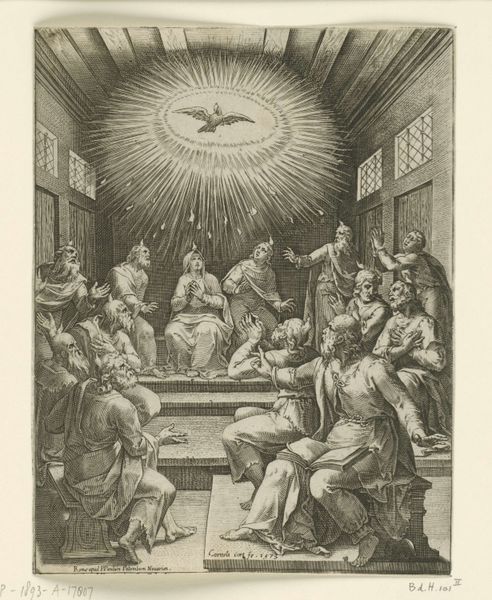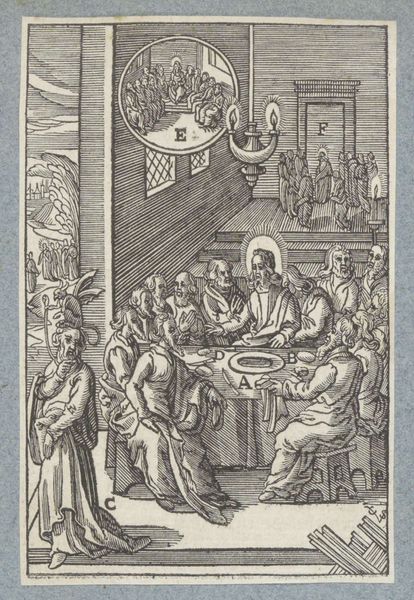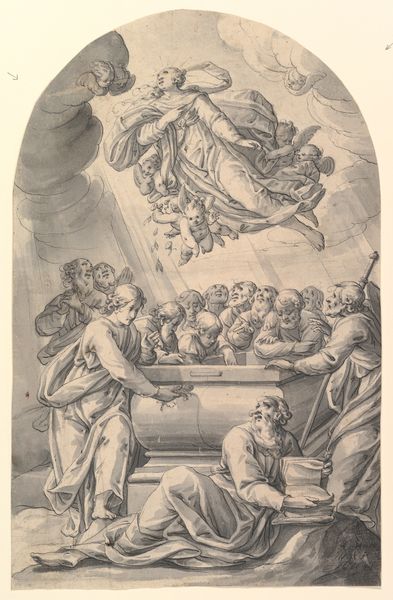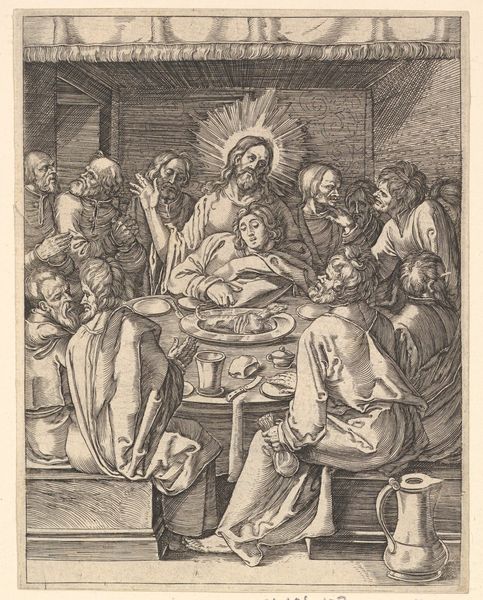
drawing, print, engraving
#
drawing
# print
#
men
#
pen work
#
history-painting
#
engraving
Dimensions: Sheet: 6 3/8 × 4 in. (16.2 × 10.1 cm) Plate: 5 9/16 × 7 5/16 in. (14.2 × 18.5 cm)
Copyright: Public Domain
Curator: Welcome to the Metropolitan Museum of Art. We’re standing before Robert Nanteuil’s engraving, "The Four Evangelists," created sometime between 1648 and 1658. Editor: My first impression is of intense concentration. The stark lines create a serious, almost austere atmosphere, as if capturing a moment of sacred deliberation. Curator: Precisely. Nanteuil's use of line—observe the density in the shading, creating depth and form—emphasizes the structure of the composition. Notice the symmetry: the implied horizontal line of the table bisecting the vertical thrust of divine light. The figures are carefully arranged, creating a pyramidal structure that stabilizes the overall image. Editor: And consider the iconographic weight of those visual elements! The descending dove signifies divine inspiration, the source of their writing. Even the inclusion of the lion below the table–likely representing St. Mark–suggests a lineage of sacred texts and tradition, firmly rooting this scene in cultural memory. What about the eagle above, mirroring the descending dove, I assume that it's representing St. John? Curator: Indeed. Structurally, the mirrored composition is visually striking: light mirroring above and support below, a careful consideration by Nanteuil of positive and negative space. Furthermore, note how the pen work contributes to the texture of the piece: lines hatch and cross, giving depth to robes, beards, the feathers of the dove. The materiality of ink on paper gives a verisimilitude to the image. Editor: Symbolically, there’s a profound emphasis on communal work. They are unified by "one and the same spirit" according to the text displayed at the top. Although each evangelist pens their own gospel, they are divinely linked and sharing this crucial mission of translation and dissemination. The composition subtly underlines this relationship between the spiritual, represented by the dove, and the mortal task of translation. Curator: Ultimately, what we find compelling is Nanteuil’s manipulation of light and shadow and his use of geometrical design—which enhances the print's powerful spiritual sentiment. Editor: Right, it reminds us that even the most carefully constructed composition serves to amplify the potent symbolism and enduring legacy contained within this very specific scriptural scene.
Comments
No comments
Be the first to comment and join the conversation on the ultimate creative platform.
